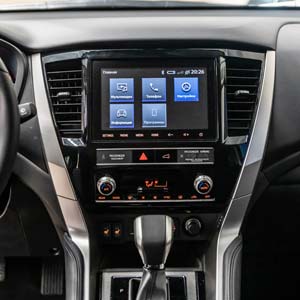Service Blog
Learn How Your Honda Works | Honda Of Fishers - Fishers, IN
Did You Know?: Brake Fluid
Your vehicle’s brake fluid is a vital component in your braking system, creating a mechanical connection between your foot and the wheels. The physics of fluid dynamics, along with anti-lock brake technology, provide you with almost effortless control while braking. However, did you know this fluid needs service periodically? In this article, we’ll explore the reason why you should have Honda of Fisher’s Brake Fluid Exchange Service performed every three years as recommended by American Honda.
What makes brake fluid a mechanical connection is its property as a fluid when dry, meaning no moisture contamination. When dry, brake fluid is incompressible, allowing it to act as a mechanical connection between the master cylinder and the wheel components, the calipers and wheel cylinders. This is the ideal state for brake fluid. As stated in an article on StopTech.com, “By definition, DOT 3 fluids must have a minimum dry boiling point (measured with 0 percent water by volume) of 401°F and a minimum wet boiling point (measured with 3.7 percent water by volume) of 284°F.”
Another property of brake fluid is that it is hygroscopic. This means it has the ability to absorb moisture. As you can see in the above statistic, brake fluid with only 3.7% moisture by volume drops in boiling temperature almost 120 degrees. This is significant because in my 30 years of experience I have had on occasion to measure brake temperatures. On a typical road test with normal braking, I have measured temperatures of 200 degrees right after stopping. On brakes with a malfunction such as a caliper piston that is not retracting, I have seen temperatures of 500 degrees and higher. This is a potentially dangerous condition that can be detrimental to the stopping power of your vehicle.
In spite of the fact that the brake master cylinder on your vehicle contains rubber seals to keep out contaminants, moisture can still leech through over time. Brake fluid with moisture content decreases the natural incompressibility of the fluid, softening the pedal feel for the driver, who now has to exert more effort in stopping their vehicle. In addition to keeping your braking system working optimally, flushing your system of old, moisture-laden fluid also reduces the possibility of corrosion developing internally, potentially saving you thousands of dollars in repairs.
American Honda, as noted in the training course each of our certified technicians is required to pass to work on your Honda, recommends servicing the brake fluid through an exchange process EVERY 3 YEARS, regardless of mileage. Visit our scheduler to obtain an appointment today, or if you have any other questions for one of our technicians, visit us or Ask A Tech
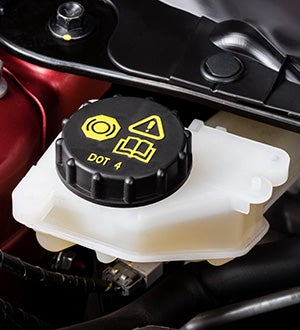
Did You Know?: Squealing Brakes
Squeaking brakes can be really annoying and embarrassing. Typically, we tend to think something is wrong with the brakes when they squeak. It's not necessarily true, though. I'll first walk you through the scenarios that DO need attention, then I will share some experience with those scenarios that only require some understanding.
Brake pads on most vehicles with an average driver typically last from 50-85,000 miles. Some pads could go longer, like if the driver spent most of the time on the highway. The shortest brake pad life I have seen was on a 1998 Nissan Pathfinder. The vehicle’s owner drove it about 7,800 miles before a certain noise occurred that alerted the driver to bring it in to us. We found the brakes were hitting the squealers (a piece of thin metal attached to the pad) and the pads had worn evenly on both sides. The almost continuous noise he heard told the driver something was wrong. It is designed to make contact with the rotor around 2 millimeters from the pad backing to let the driver know it’s time to check the brakes before more severe damage can result. It was a surprise - until the customer told us he delivered newspapers for a living.
If the driver ignores this noise, or it can’t be heard for various reasons, another noise develops that is even more costly. Grinding is a very good indicator that the brakes have now reached metal to metal, which means that an ordinary resurfacing might not do and the brake rotors may have to be replaced. Even worse, now the braking performance is severely diminished. A brake pad in proper working order has more surface area thus more stopping power and heat dissipation. Brakes at metal to metal have less surface contact area, generate more heat, and have a lot less stopping power.
Some squeaks don’t need the attention like the previous examples do. The first one I will call the "getting out of bed" squeak. You back your car out of your driveway , or pull it out of its spot first thing in the morning. The first brake application you hear a light chirp at the end, and maybe even the second or the third. Then you don’t hear a peep for the rest of the day. There’s nothing to worry about in this case. It may have been a cool morning out or the humidity was high. Moisture built up on the surface of the pads and the rotors. During the first couple of applications, until the moisture evaporates away, the brakes will experience a microscopic slip/stick condition, which creates the squeak. Since the atmospheric condition changed later in the day, so did the appearance of the noise.
Under heavy stop-and-go driving, brakes can reach high temperatures. The expansion of the metals can change the shape of the metals ever so slightly, so a customer could possibly experience a slight squeak when almost stopped. The brakes cool, the noise goes away.
Honda of Fishers offers a free brake check with every service. Let our service managers know if you have any concerns and we'll take a look at it. Have a question for a technician? Just fill out this form and we'll answer it!
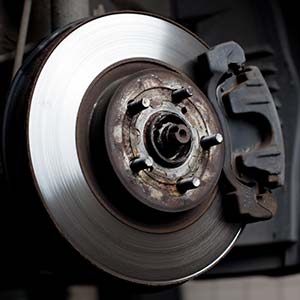
Did You Know?: Transmission Fluid
Transmission service is vital to the long life of your Honda. Proper transmission fluid has properties that both lubricate some parts while providing a liquid coupling between others. Bearings and gears inside your transmission require lubrication, while friction and steel plates inside clutch drums need cushion-ing through hydraulic pressure to create a soft yet mechanical connection. The cleanliness of this fluid key to continued trouble-free service. Some shops offer quick flush systems that may use solvents to remove debris and old material from the transmission. This seems like a good deal until something goes wrong and the transmission starts acting strange, with less than quality gear changes and even slipping occurring. Genuine Honda fluid may not even be used, and with different friction characteristics, the same symptoms may develop. What does Honda say about the issue of flushing or not?
From Honda Service News dated August 2000, “Transmission flush systems are not approved or recommended for Honda A/Ts because many flush systems require or encourage the use of solvents, additives, or non-Honda ATF.”
So, to get the Automatic Transmission clean again, what do we do? Well, we perform a service called a Transmission Exchange. It requires a drain and fill of the transmission fluid up to 4 times, running 12 quarts of fluid through the transmission to get over 98% of the old fluid out of it. With each drain, we fill it with new fluid and run the transmission through the gears, then drain it again. This ensures we are circulating new fluid through all of the gears and the torque converter. The continuation of the procedure allows us to get most of the old fluid out and ensuring your transmission doesn’t suffer any damage along the way. This procedure in most cases cures shuddering and rough shifting resulting from the fluid viscosity breaking down.
If you have any questions about this or anything else on your Honda, you can reach one of our technicians.
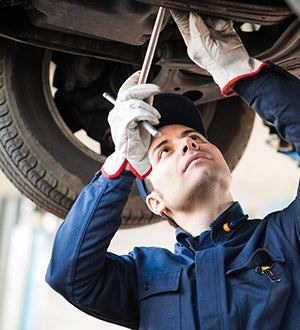
Did You Know?: Maintenance Minder™
The Maintenance Minder™ on your Honda vehicle is a high tech solution for you to know exactly when your vehicle is in need for regularly scheduled maintenance.
Its system takes into account your driving habits, including time, traffic conditions, engine temperature, and environmental conditions, to accurately calculate the longevity of your engine fluids. It also calculates time and mileage for your filters.
The Maintenance Minder™ has a simple letter/number coding system telling you and us what items need attending to on your vehicle.
The Maintenance Minder™ has a schedule “A” and a schedule “B”. Schedule “A” is simply an oil and filter change. Schedule “B” includes this and adds a complete vehicle inspection for your added peace of mind.
Following the letters are the numbers 1-6 (on vehicles without four-wheel drive it is 1-5).
- Tire rotation
- Replace the engine and cabin filters and inspect the drive belt
- Replace transmission fluid
- Replace spark plugs, replace the timing belt (on some models) and inspect the water pump.
- Replace engine coolant
- Replace the rear differential fluid
The benefits allow you to drive without having to keep track of one more thing in your busy life. If you have any other questions regarding the maintenance of your vehicle, ask one of our knowledgeable assistant service managers.
Visit our scheduler to obtain an appointment today, or if you have any other questions for one of our technicians, visit us or Ask A Tech.
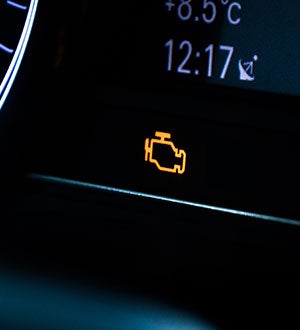
Did You Know?: Octane Level
A question that customers have asked me occasionally is “What octane is good for my car? I just bought it and I do not want to wreck it by putting in the wrong gas.” That is a good, responsible question.
All Honda models, with the exception of the S2000, have a minimum requirement of 87 octane or higher. Compression ratio design in Honda engines does not dictate a need for an octane higher than 87 in most driving conditions.
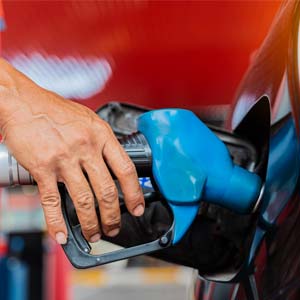
Did You Know?: HandsFreeLink®
Tech savvy and busy customers like yourself have probably purchased your new Honda for its tech features, specifically the HandsFreeLink® feature.
While this feature is great for convenience and safety, any tech item is prone to its glitches. These setbacks can be irritating. We understand your frustration.
